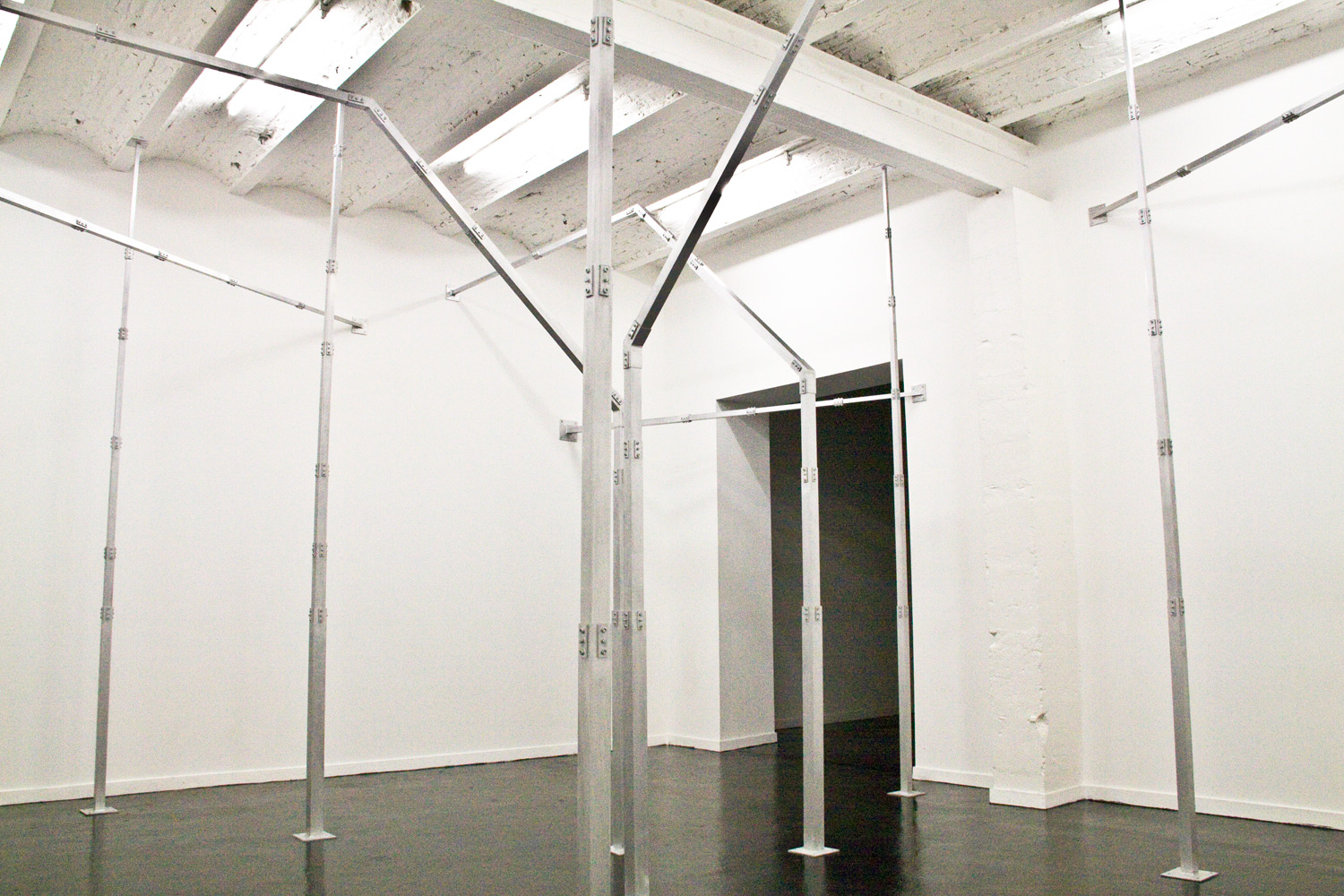
In construction terms, a strut is a piece of metal destined to temporarily support an architecture. Based on this principle, Jennifer Caubet proposes a « Space of Temporary Autonomy » created by the presence of a modular aluminium ensemble. Imagined as a telescopic construction set, this sculpture spreads out in the space, adapting to its dimensions and revealing it. Depending on the proposed areas, new strategies of occupation of space take form. Exhibited, re-exhibited, pending or deployed, bearing marks of the interventions, the E.A.T sculpture plays with its potential as a nomadic sculpture.
This concept of autonomous space takes it inspiration from the utopian architecture of the 70s, like Archigram's auto-environments, theoretical suggestions of autonomous micro organisations like TAZ and the principle presented by Gilles Deleuze and Felix Guattari in their Nomadology: The War Machine. In this sense, sculpture's aesthetics are not only formalistic but remain fuelled by elements taken from precarious architecture, built elements, and by the desire of an occupation strategy of space that leads to construction.
My work questions the materialization of the utilitarian desire of shapes or ideas. My research is fuelled by artistic utopias and ideological symptoms. My main interest is the connection that a building has with a territory and the relationship that a shape has with the notions of power, defence and taking control.
Built in a polymorphous way, my work focuses mainly on sculpture and installation, but video, animation and computer-assisted drawing are also mediums that contribute to it. In all of these modes, I have a very specific link with space. My productions show a rationalisation of space and form. Architecture is one of the first ways to structure and organise space. My fascination of the principle itself of the construction, the erecting phenomena and the concept of an environment fuels my work.
However, my sculptures also show the ability an artistic production has to transform space, to create new situations. Imagined like kits or accessories, my sculptures suggest nomadism, the idea that they could be a potential, a way of appropriating space. This potentiality involves thinking « the sculpture as a form of actions» . More and more, my sculptures don't have a definitive form of presentation. They seek to be adaptable and propose different forms in each space that welcomes them. They play with their deployment, the scattering of elements in space, and the opposite. Beyond simply being research on modular or portable sculpture, they assert the possibility, proposal, and diversity at the heart of the principle itself and their belonging to a space time continuum.
Jennifer Caubet